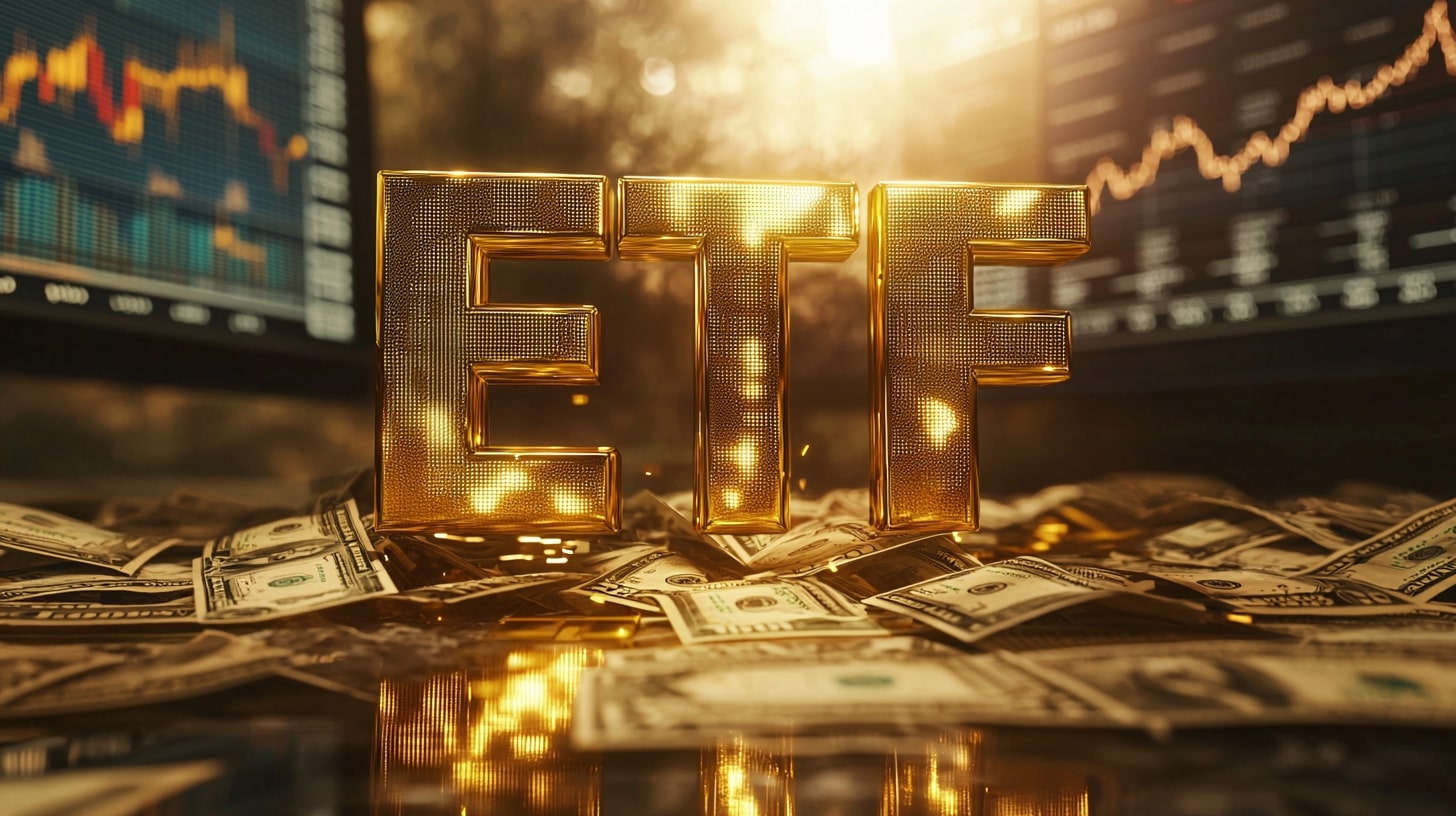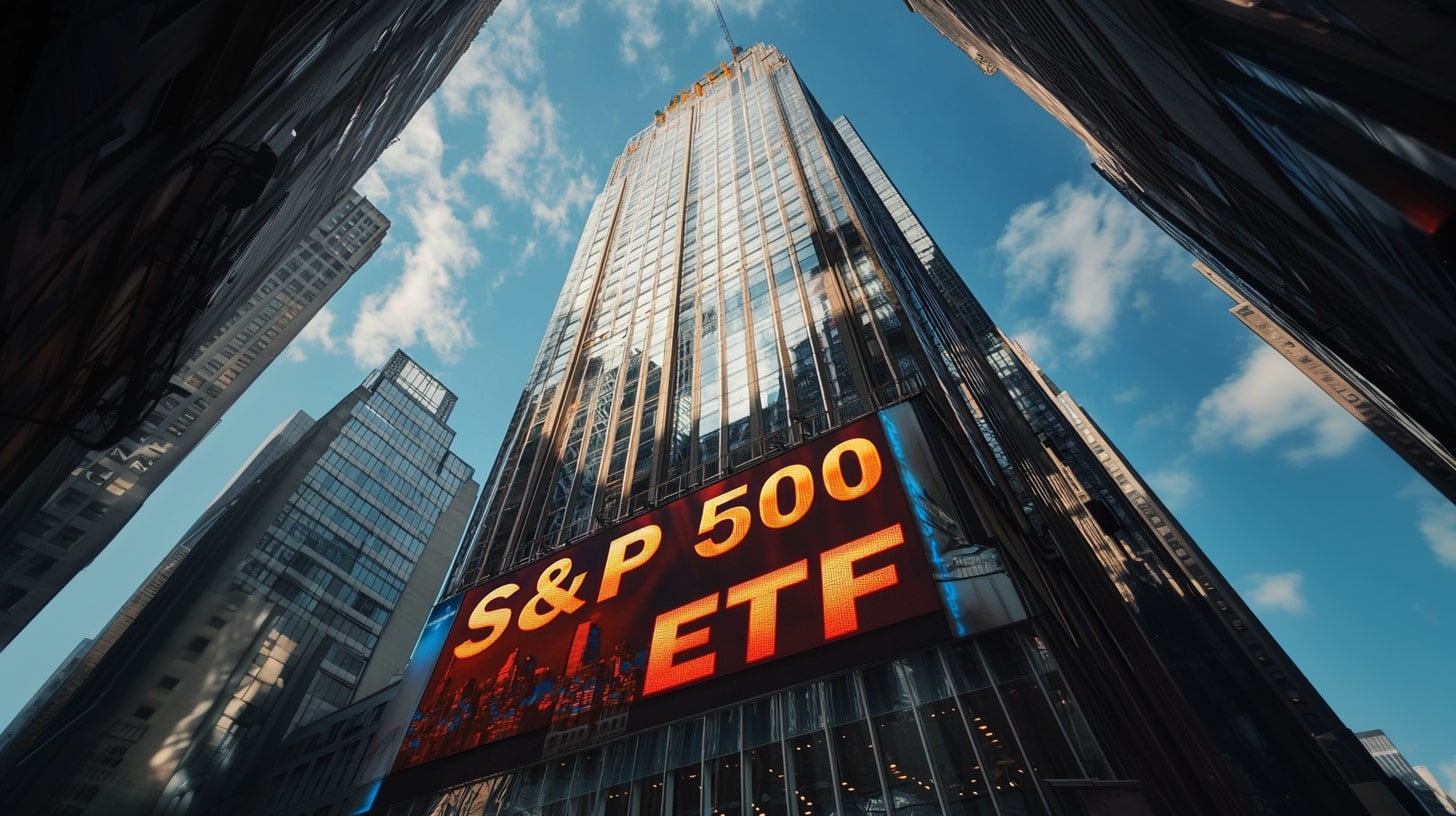
US Bond Market Analysis - AGG ETF Trading News Performance
Investors Favor AGG ETF Despite Economic Uncertainties - Understand the Attraction Towards this Resilient Investment Vehicle Analysis | That's TradingNEWS
In spite of the evolving economic scene, the resilience of the Exchange Traded Funds (ETF) market is impressive. The bullish trend in equity funds continued for the fifth week in a row with a net inflow of nearly $10.3 billion during the last fund-flows week. This streak, remarkable in its own right, saw iShares Core S&P 500 ETF (IVV) amassing $3.7 billion and Invesco QQQ Trust 1 (QQQ) drawing in $2.6 billion, becoming the most favored individual equity ETFs of the week. On the flip side, not all sectors painted the same picture. The iShares US Technology ETF (IYW) and the iShares MSCI USA Quality Factor ETF (QUAL) were at the receiving end of the week's most significant net redemptions, amounting to $1.818 billion and $1.755 billion respectively. This discrepancy hints at a possible sector- or style-specific ChatGPT shift in investor sentiment. The technology sector, once a powerhouse of growth, witnessed notable redemptions, indicating that investors might be repositioning their portfolios towards less risky or more promising sectors. The taxable fixed-income ETFs also experienced a strong inflow of $2.2 billion, despite the ongoing concerns about rising federal debt rates, which stood at 2.76% in June 2023, up significantly from 1.57% in February 2022. The burgeoning federal debt has heightened the federal budget deficit, expanding to -5.4% of GDP in 2022, up from -14.8% during the height of the pandemic in 2020. Even the federal interest payments have soared to $615 billion TTM, imposing substantial fiscal pressure. In response to the escalating federal debt and the fear of interest rate hikes, investors are increasingly exploring floating rate and short-duration fixed income for potential risk-adjusted returns. This trend showcases a strategic move to cushion portfolios from the potential impact of rising interest rates. In the world of Exchange Traded Funds (ETF), the iShares Core U.S. Aggregate Bond ETF (AGG) stands out, having witnessed an estimated inflow of $696.7 million. This increment accounts for a 0.8% increase week over week in outstanding units, from 941,400,000 to 948,500,000. Being traded on the NYSEArca - Nasdaq, the ETF's net assets stand at a staggering $91.9B, reflecting its enormous capital base. The U.S. Aggregate Bond ETF, listed under the symbol AGG, has encountered a nuanced climate in the Treasury. The long-run peak of 1-month Treasury forward rates surged by 0.15% to 5.08% in the weekly forecast dated July 28, 2023. This comes amidst a continued streak of negative 2-year/10-year Treasury spreads, which has now persisted for 267 trading days, only 11 days short of marking the second longest such stretch since 1976. The probability of this inverted yield curve ending by January 26, 2024, is now at 4.4%, up from 3.2% a week prior. This brings us to the subject of inverted yields and negative rates. The yield curve inversion has been a consistent element of the U.S. Treasury market since the first reports of 2-year Treasury yield in 1976. Economists, such as Alex Domash and Lawrence H. Summers, have linked a downward sloping U.S. Treasury yield curve with impending recessions. Simulating 500,000 future paths for the U.S. Treasury yield curve out to thirty years, it appears that there's a 95.6% probability of continued inversion by January 26, 2024. In relation to the default probability for different capital ratios, it's been noted that for a 5% case, the default probability stands at 38.53%, up from 38.15% the previous week. This calculation relies on weekly U.S. Treasury yield simulation, taking into account credit risk. Federal Government tax receipts, usually reflective of economic health, have been decreasing over the last year, recording a dip of 5.07% in Q1 2023. This coincides with Gross Domestic Income (GDI) declining over the past two quarters, contradicting the strong employment data, including a low unemployment rate of 3.6% and robust real GDP numbers, such as a 2.4% annualized increase for Q2 2023. This indicates an overall potential economic decline. Historically, a yearly decrease in U.S. tax receipts since 1950 has often signaled an economic recession. This is due to the decrease in income and economic activity during these periods. It is, however, also plausible that this decline could be a reversion to the mean after the influx of tax revenues during the pandemic-induced economic boom. The economy currently grapples with increased Federal debt rates, having risen from 1.57% in February 2022 to 2.76% in June 2023. This burgeoning burden has deepened the Federal budget deficit to -5.4% of GDP in 2022, up from -14.8% during the peak of the pandemic in 2020. The Federal interest payment alone has amounted to $615 billion TTM, a significant economic strain. This situation necessitates the exploration of floating rate and short duration fixed income for risk-adjusted returns. Notably, investors have continued to inject funds into the market, with a net purchase of $35.5 billion in fund assets for the week ended Wednesday, July 26. This includes equity funds (+$3.2 billion), taxable bond funds (+$2.9 billion), money market funds (+$28.8 billion), and tax-exempt fixed income funds (+$552 million). The market has shown significant resilience with the Dow Jones Industrial Average enjoying its longest winning streak of 13 straight trading sessions since 1987. Nonetheless, the prospect of an interest rate hike from the Federal Reserve Board has caused some unease. The 10-year Treasury yield finished higher, rising 11 basis points and settling at 3.86%. Investors' sentiment towards Equity ETFs remains strong, with net inflows observed for the fifth consecutive week, amounting to nearly $10.3 billion for the most recent fund-flows week. The taxable fixed-income ETFs also experienced net inflows, receiving $2.2 billion this week. Notably, the iShares Core S&P 500 ETF (IVV, +$3.7 billion) and Invesco QQQ Trust 1 (QQQ, +$2.6 billion) attracted the most significant amounts of new money among all individual equity ETFs. On the other hand, the iShares US Technology ETF (IYW, -$1.818 billion) and the iShares MSCI USA Quality Factor ETF (QUAL, -$1.755 billion) saw the largest individual net redemptions for the week. Furthermore, the money market funds enjoyed a significant uptick, recording an inflow of $28.8 billion for the week. This considerable shift towards the perceived safety of money market funds can be seen as a strategy by investors to safeguard their capital against the prevailing market uncertainty. Investors also poured $35.5 billion into fund assets in the week ending Wednesday, July 26, which included equity funds (+$3.2 billion), taxable bond funds (+$2.9 billion), and tax-exempt fixed income funds (+$552 million). However, the decrease in Federal tax receipts by 5.07% in Q1 2023 may signal some degree of economic distress, further corroborated by a decrease in the Gross Domestic Income (GDI) over the last two quarters. Despite these potential warning signs, the labor market tells a different story, with an impressive unemployment rate of 3.6%, and a strong real GDP growth of 2.4% annualized increase for Q2 2023. The market is treading an interesting path, exhibiting strong market performance on the one hand, while also grappling with potential recessionary indicators on the other. In the context of bond markets, the probability of the yield curve inversion ending by January 26, 2024, has risen to 4.4%, up from 3.2% a week earlier. Additionally, the default probability at a 5% capital ratio has increased to 38.53% from the previous week's 38.15%. Both these indicators highlight the presence of risk factors in the market. As we look into the second half of 2023, the investment landscape seems to be a dynamic interplay of robust market performance and potential economic stressors. In the midst of these cross-currents, the ETF market, particularly the iShares Core U.S. Aggregate Bond ETF (AGG), stands as a beacon of resilience and performance. The AGG ETF, with its diverse portfolio composition, provides an investment alternative for those seeking broad exposure to the U.S. investment-grade bond market. It comprises of Treasury bonds, government-related bonds, corporate bonds, and securitized bonds which diversifies risk while providing the potential for moderate yield. The significant inflow of $696.7 million to the AGG in the past week signifies that investors recognize the benefits of investing in this particular ETF, particularly during times of market volatility. This further illustrates the increased propensity towards diversification and risk management in the current economic climate. The performance of AGG, underpinned by a strong capital base of $91.9B, showcases the ETF's ability to weather economic headwinds. A critical aspect of AGG's attractiveness is its inherent defensive quality. In times of uncertainty, when riskier assets like equities may see a drop, bonds can act as a cushion and reduce portfolio volatility. The uptick in AGG's inflows may indicate an investment shift towards more defensive strategies, and AGG's diversified exposure to the bond market makes it an excellent choice for such a strategy. In the light of the Federal Reserve's potential interest rate hikes, the inflation-indexed bonds included in AGG's portfolio offer a degree of protection. While the Federal debt rates continue to rise, the AGG ETF continues to provide a stable investment option. However, as the AGG is subject to interest rate risk, the anticipated hikes may present some challenges. But considering the sheer resilience and the diversified nature of the ETF, it could weather these potential setbacks effectively. As we move further into 2023, investors' vigilant approach and adaptive investment strategies will play an essential role in navigating the complex economic landscape. Amidst these developments, the iShares Core U.S. Aggregate Bond ETF (AGG) remains a solid choice for those seeking to balance their portfolios with a mix of income generation, capital preservation, and overall risk mitigation. To sum up, the AGG ETF stands as a testament to the durability and resilience of well-structured investment vehicles in an ever-changing market. Its robust performance amidst the fluctuating economic climate speaks to its strategic importance in investors' portfolios and its role in providing them with a certain level of security in uncertain times. In a world of unpredictability, the iShares Core U.S. Aggregate Bond ETF (AGG) remains a steady anchor, emphasizing that even in the face of adversity, resilience and strategy prevail. As we look into the second half of 2023, the investment landscape seems to be a dynamic interplay of robust market performance and potential economic stressors. In the midst of these cross-currents, the ETF market, particularly the iShares Core U.S. Aggregate Bond ETF (AGG), stands as a beacon of resilience and performance. The AGG ETF, with its diverse portfolio composition, provides an investment alternative for those seeking broad exposure to the U.S. investment-grade bond market. It comprises of Treasury bonds, government-related bonds, corporate bonds, and securitized bonds which diversifies risk while providing the potential for moderate yield. The significant inflow of $696.7 million to the AGG in the past week signifies that investors recognize the benefits of investing in this particular ETF, particularly during times of market volatility. This further illustrates the increased propensity towards diversification and risk management in the current economic climate. The performance of AGG, underpinned by a strong capital base of $91.9B, showcases the ETF's ability to weather economic headwinds. A critical aspect of AGG's attractiveness is its inherent defensive quality. In times of uncertainty, when riskier assets like equities may see a drop, bonds can act as a cushion and reduce portfolio volatility. The uptick in AGG's inflows may indicate an investment shift towards more defensive strategies, and AGG's diversified exposure to the bond market makes it an excellent choice for such a strategy. In the light of the Federal Reserve's potential interest rate hikes, the inflation-indexed bonds included in AGG's portfolio offer a degree of protection. While the Federal debt rates continue to rise, the AGG ETF continues to provide a stable investment option. However, as the AGG is subject to interest rate risk, the anticipated hikes may present some challenges. But considering the sheer resilience and the diversified nature of the ETF, it could weather these potential setbacks effectively. As we move further into 2023, investors' vigilant approach and adaptive investment strategies will play an essential role in navigating the complex economic landscape. Amidst these developments, the iShares Core U.S. Aggregate Bond ETF (AGG) remains a solid choice for those seeking to balance their portfolios with a mix of income generation, capital preservation, and overall risk mitigation. To sum up, the AGG ETF stands as a testament to the durability and resilience of well-structured investment vehicles in an ever-changing market. Its robust performance amidst the fluctuating economic climate speaks to its strategic importance in investors' portfolios and its role in providing them with a certain level of security in uncertain times. In a world of unpredictability, the iShares Core U.S. Aggregate Bond ETF (AGG) remains a steady anchor, emphasizing that even in the face of adversity, resilience and strategy prevail.
That's TradingNEWS
















